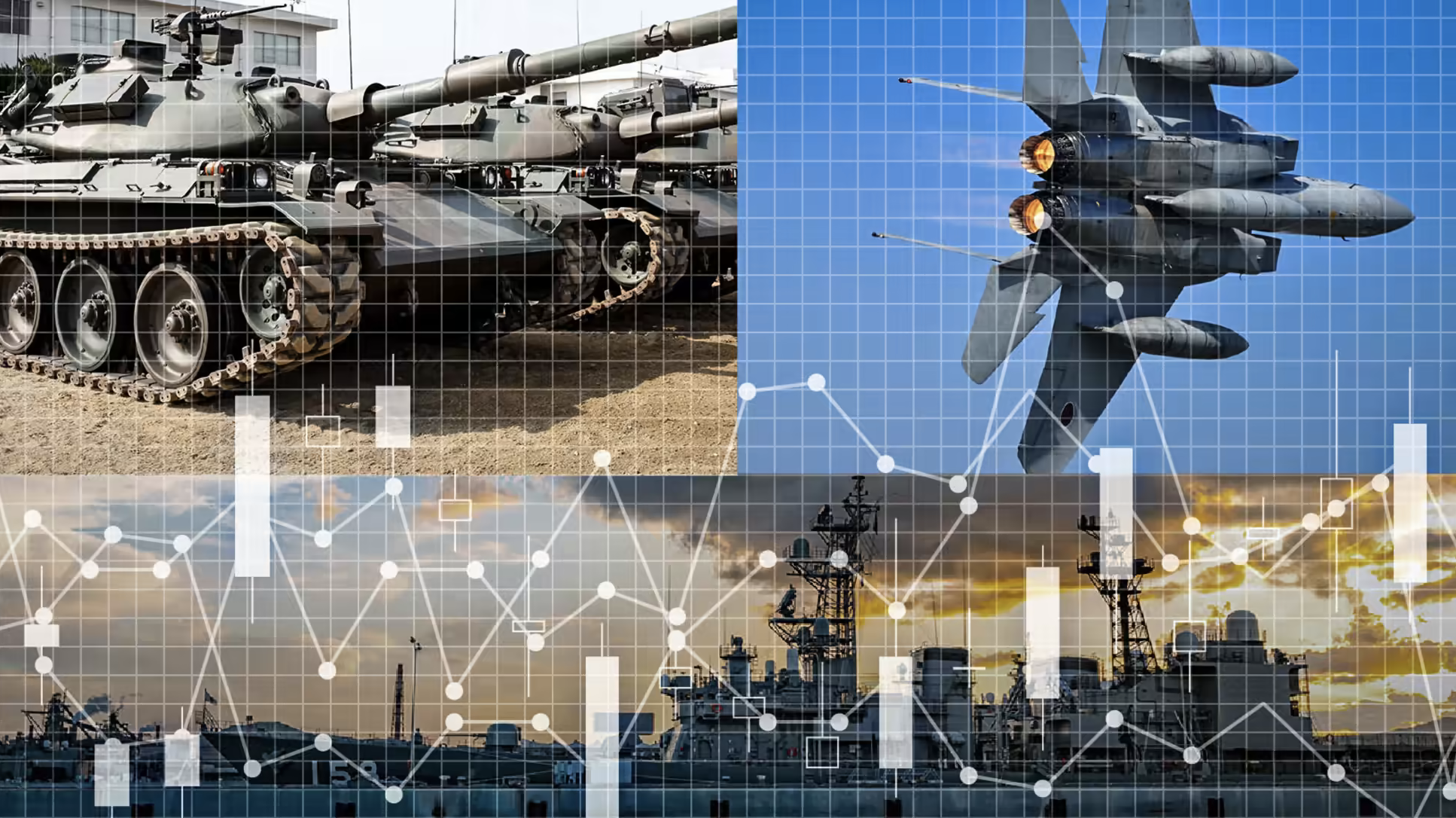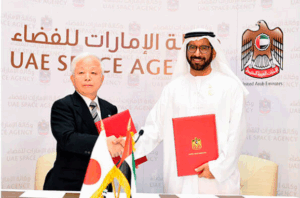This article was originally published in French by le Portail de l’IE, in May 2022. Thank you to the author and the editors for their kind authorization to translate and re-publish.
China’s emergence as a regional military power represents the main threat to Japan’s strategic interests. The incompatibility of Chinese hegemonic aspirations with Tokyo’s security needs in the East & South China Sea requires Japan to rethink the structure of its defense industry. With US military support in the event of a conflict not taken for granted by some Japanese authorities, Tokyo is aware of the urgent need to develop innovative military technological capabilities capable of dealing with 21st century threats.
Tokyo’s desire not to be left behind by its adversaries in the field of defense technology innovation has been the basis for numerous initiatives launched over the past decade to improve the competitiveness of its arms industry: the publication of a Strategy on Defense Production and Technological Bases white paper in 2014, the launch of a new agency in 2015 – named Acquisition, Technology & Logistics Agency (ATLA) – whose main objective is to define Japan’s military strategic priorities in technological innovation, the launch of a program to develop a sixth-generation stealth fighter for the Japan Air Self-Defense Force in 2019, as well as an increase of the military budget to 1. 3% of GDP in 2021.
These initiatives, however, do not appear to be sufficient to address the structural challenges facing Japanese policymakers: the national defense industry remains a fragile player within the country’s economic and industrial ecosystem. Unlike the United States and China, Japan has few companies whose business model is primarily focused on the defense sector. This situation is highlighted by Shinichi Iwanari, a retired lieutenant-general, for whom “the defense sector represents only a limited percentage of the activities of companies with expertise in the world of armaments”.
Another problem is that Japan has lagged behind in terms of developing market penetration strategies and international arms sales. The adoption of guidelines prohibiting the sale of arms abroad – the Three Principles on Arms Exports of 1967 and the Collateral Policy Guideline of 1976 – contributed greatly to the isolation of the national defense industry from joint projects developed by its international allies. These decisions should be seen in the historical context of the Japanese authorities’ strong introversion following the military defeat of 1945. The consequences of the war on Japanese public opinion and the absence of regional threats comparable to those of the 21st century prevented Tokyo from becoming more involved in issues related to international conflicts.
The advent of new regional security challenges has recently prompted Japanese authorities to adopt a new policy for managing foreign arms sales. In 2014, the Japanese government – through the Three Principles on the Transfer of Defense Equipment and Technology – significantly eased restrictions on international arms exports. One of the measures sought by the 2014 reform was to allow the Japanese defense industry to participate in joint technology development projects in the military field promoted by Tokyo’s allied countries.
Japan is aware that budget limitations and technological complexity, the main characteristics of major defense projects in the 21st century, cannot be overcome without the support of its main strategic partners. The F-35 program has demonstrated that the realization of advanced military programs requires considerable economic and technological resources. The development and production of the F-35 required the participation of leading defense contractors from seven US-allied governments and an estimated total cost of $1.7 trillion. Strict adherence to the guidelines prior to the 2014 reform – in particular the export of the F-35 to countries involved in international conflicts – had prevented Japan from taking part in the US program at the time.
Japan’s absence from the F-35 program highlights Tokyo’s difficulties in establishing strong cooperation between its defense industry and that of its allies. Cooperation has unavoidable advantages for a middle power like Japan: the possibility of reducing costs through economies of scale and improving certain operational values through greater equipment commonality. The inability to exploit this advantage is reflected in a growing lack of competitiveness in the Japanese arms industry. Two case studies are particularly revealing of the competitiveness problems currently plaguing the Japanese military-industrial complex: the gradual exit from the arms sector of Komatsu Limited and the cessation of machine-gun production at Sumitomo Heavy Industries.
Case study #1 – Komatsu Limited’s exit from the weapons industry
In 2019, Komatsu Limited, a Japanese construction machinery company and historical supplier to the Japanese Ministry of Defense (MoD), announced the suspension of production of its light armored vehicles (LAV). Technical difficulties in producing a new LAV to meet the needs of Japan’s Ground Self-Defense Force (GSDF) and the unit production costs, which are almost three times higher than those of its foreign competitors, are said to have been the reason for the MoD and the Ministry of Finance’s decision to reject Komatsu’s proposals for the production of a new vehicle.
The Japanese government’s decision to sharply reduce the number of GSDF armor and artillery pieces over the next few years also threatens another of Komatsu Limited’s core businesses: ammunition production. The prospect of a sharp reduction in orders from the MoD is thus probably the reason for the Tokyo-based company’s decision to halt its plan to develop precision-guided artillery ammunition for the GSDF.
Case study #2 – Sumitomo Heavy Industries withdraws from machine gun production
In 2021, Sumitomo Heavy Industries – a company owned by the Japanese industrial conglomerate Sumitomo and a historical supplier of machine guns to the GSDF – withdrew from the selection process for the next series of machine guns for the Japanese Army. SHI’s decision to withdraw from the MoD’s tender is related to the lack of competitiveness of its firearms. As in the case of LAVs produced by Komatsu Limited, the unit production cost of SHI’s machine guns is far higher than that of its international competitors. The price of SHI’s machine guns is about five times that of foreign-made weapons. Such a price difference does not seem to be explainable by the performance of SHI’s machine guns. In 2013, the quality of SHI’s machine guns had indeed been called into question by a technical scandal: SHI had allegedly falsified the performance and durability data of these machine guns for over 40 years.
As a result, the MoD ordered the temporary suspension of SHI’s machine gun production and demanded financial compensation of approximately $500,000. The 2013 scandal highlighted the serious structural difficulties that threaten Sumitomo’s presence in the arms industry. SHI’s gloomy long-term prospects convinced the Tokyo-based company to announce the suspension of its production of machine guns for the Japanese armed forces.
Conclusions
The case studies presented in this article have highlighted the existence of critical problems plaguing the Japanese defense industry. The main reason for this lies in the pacifist defense and foreign policy policies that have dominated the Japanese political spectrum since 1945. The historical legacy of World War II has long stifled the growth of the national defense industry. The only companies capable of reviving Japan’s arms industry – Mitsubishi Heavy Industries and Kawasaki Heavy Industries – receive preferential government treatment – especially in R&D – which helps discourage cooperation between Japanese companies and their international counterparts. Without this preferential treatment policy, the solvency of these two companies would not be guaranteed.
However, a protectionist policy has important drawbacks. The most immediate consequence for a state resorting to excessively preferential measures is the reduction of its capacity for innovation. According to Ufuk Akcigit, professor of economics at the University of Chicago, “When you close your borders, you’re removing the international competitive pressure on your firms, so they don’t need to upgrade their technologies anymore. As a result, they don’t need to invest that much in R&D, and that’s why you have less innovation in the longer run and less economic growth in the long run.”
This situation seems particularly illustrative of the state of the Japanese defense industry. According to Heigo Sato, a professor at Takushoku University in Tokyo, Japan is currently “unable to manufacture products that meet the needs of its allies in terms of price and performance.” The issue with the competitiveness of Japanese military armaments does not only concern relations with Tokyo’s allies. The excessive price and the limited performance of its products have not allowed Tokyo to develop an international clientele interested in its products, thus limiting the growth of its defense industry. In the absence of policies capable of making its military equipment more competitive, the main risk for Tokyo is that its military industry will gradually stagnate.
The gradual stagnation of the defense industry threatens to complicate Tokyo’s participation in its allies’ development projects. Tokyo’s difficulty in providing cutting-edge technical knowledge and experience is not the only concern for Japan’s allies. The United States are also concerned about the low level of security of Japan’s information systems, a significant aspect of the advanced weapons production process. The opportunity to develop a strong interdependence with its allies may therefore turn into an asymmetric dependence on certain strategic partners, especially the US.
The share of military equipment imports – such as F-35 stealth fighters and missile interceptors – purchased by the MoD through the US Foreign Military Sales program tripled between 2014 and 2019. The consolidation of this trend could later condition the room for maneuver Tokyo has to pursue its strategic interests independently of decisions coming from Washington. The membership of countries in the same alliance does not always mean convergence of strategic interests, but a momentary partnership of actors with different objectives.
Picture credits: NikkeiAsia







Be First to Comment